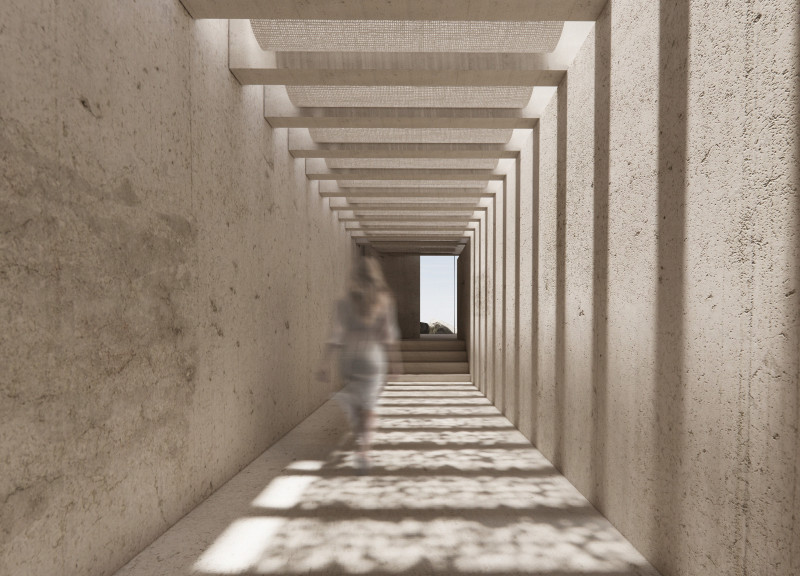5 key facts about this project
The project serves as a multipurpose facility, catering to a diverse range of activities aimed at fostering community engagement. This function is expressed through open and flexible spaces that can adapt to various events, from workshops and exhibitions to informal gatherings. The architectural layout encourages collaboration and interaction among users, promoting a sense of connection and community involvement.
A vital aspect of the design is its materiality, which features a thoughtful selection of local resources that resonate with the regional vernacular. The exterior is composed of a combination of textured stone, glass, and timber, each contributing to a warm and inviting facade. This material selection not only reflects traditional building practices but also emphasizes sustainability by using materials that are readily available and have a lower carbon footprint. The choice of glass elements introduces an abundance of natural light into the interior spaces, creating a welcoming atmosphere while minimizing the need for artificial lighting.
The structural ingenuity is evident in the roof design, which incorporates overhangs and skylights. These features serve a dual purpose: they provide shade and protection from the elements while enhancing energy efficiency by promoting natural ventilation. The integration of green roofs or terraces also fosters biodiversity and supports local flora and fauna, aligning with contemporary architectural ideas focused on ecological consciousness.
In terms of the spatial organization, the project employs an open floor plan that facilitates ease of movement and openness. This design approach allows for fluid transition between spaces, encouraging users to explore and engage with the environment. The central communal area within the facility acts as a focal point, drawing people in and inviting social interaction. Surrounding this hub, smaller breakout spaces are designed for privacy, providing users with options for focused activities or quiet reflection.
Architecturally, the project stands out through its unique ability to balance form and function. The design incorporates innovative structural elements that not only enhance the aesthetic quality of the building but also contribute to its operational efficiency. The interplay of light and shadow, achieved through strategic window placements and the manipulation of volumes, adds depth and character to the overall composition.
The inclusion of outdoor spaces further amplifies the project's connection to nature, with carefully designed landscapes that invite users to enjoy the environment surrounding the building. These areas serve as extensions of the interior, offering additional venues for recreation and socializing, and underscoring the importance of access to green spaces in urban contexts.
The architectural plans and sections reflect meticulous attention to detail, showcasing how the various elements come together to form a cohesive whole. The use of digital modeling during the design process enabled the architects to visualize and refine the interplay of light, space, and materiality, ultimately leading to a well-rounded architectural outcome.
In summary, this architectural project is a testament to thoughtful design that prioritizes community, sustainability, and resilience. By employing innovative approaches to materiality, spatial organization, and environmental integration, it represents a significant contribution to contemporary architectural discourse. Readers interested in delving deeper into this project are encouraged to review the architectural plans, sections, designs, and ideas presented, as they provide valuable insights into the nuances and intricacies of this remarkable endeavor. Exploring these elements will enhance the understanding of how architectural practices can respond to both human needs and ecological considerations.























